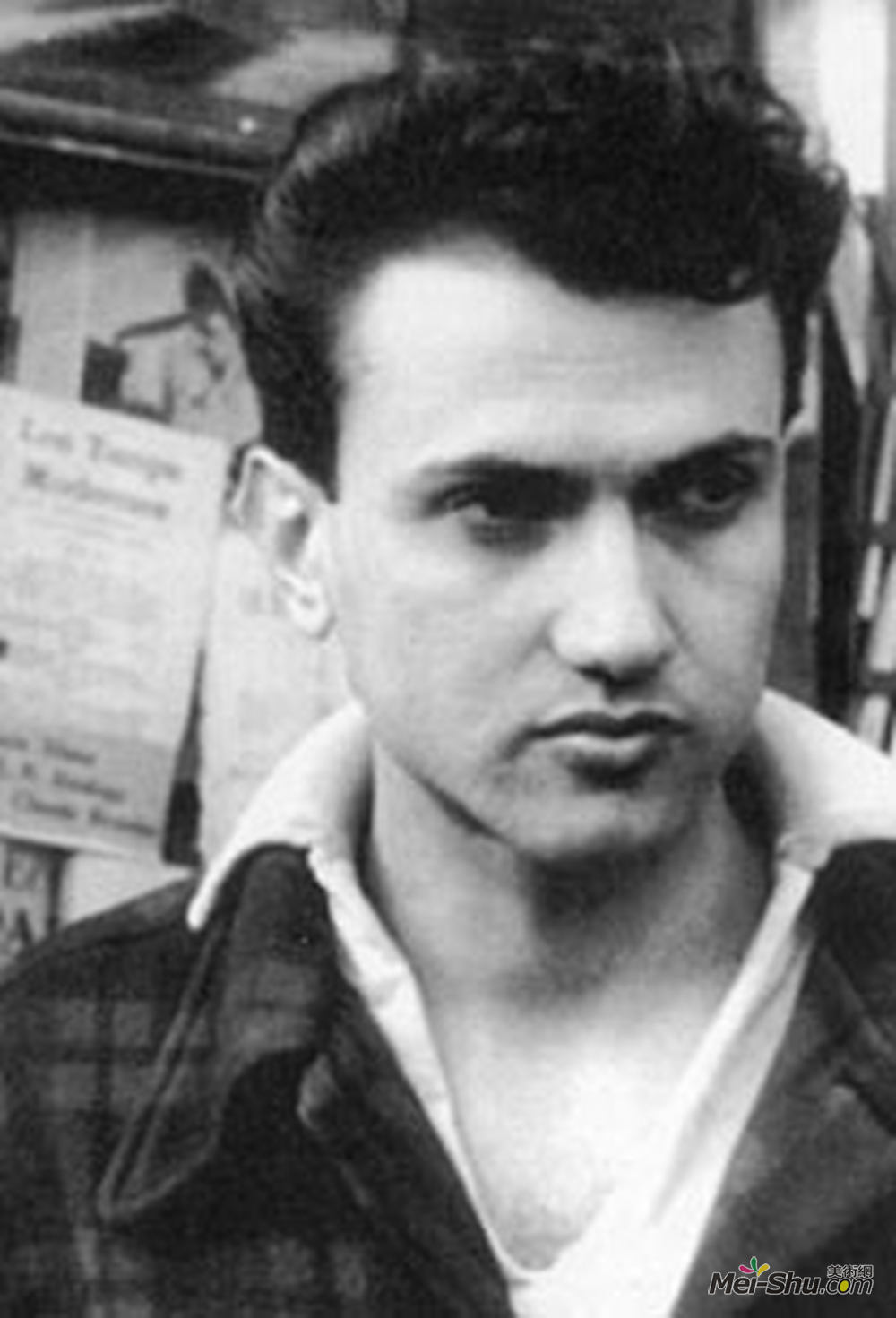
伊西多尔·伊苏(Isidore Isou)
艺术家: 伊西多尔·伊苏
生于: 1925年1月31日;博托-亚尼,罗马尼亚
卒于: 2007年7月28日;法国巴黎
国籍: 法国,以色列,罗马尼亚
流派: 字母派
领域: 绘画,艺术理论,绘画,安装
《伊西多尔·伊苏》出生于伊安伊西多尔·德斯坦,是罗马尼亚出生的法国诗人、电影评论家和视觉艺术家。他是莱特利主义的创始人,莱特利主义是一个艺术和文学运动,其灵感来自达达和超现实主义。
出生于波多萨尼的一个犹太家庭,在二战期间,伊苏开始了他作为先锋派艺术记者的职业生涯。第二次世界大战期间的罗马尼亚与未来的社会心理学家SergeMosco.一起,他创办了《达人》杂志,该杂志不久就被当局关闭了。他移居巴黎,发展了许多意在从底层开始的艺术复兴的观念。他称自己为“莱特斯特”,最初,他是该运动的唯一成员(在1942年他16岁时出版了《宣言》),并出版了一套莱特斯特超图系统。其他人很快加入了他的行列,这个运动继续发展,尽管有时以许多令人困惑的名字出现。
在20世纪60年代的《莱斯特》中,受莱斯特影响的作品和伊西多尔·伊苏在法国赢得了极大的尊重。有影响力的作家Guy Debord和艺术家Gil J. Wolman曾与伊苏共事了一段时间,之后又开始与国际象征主义者包豪斯合并,并与伦敦心理地理协会结成了情景主义者。国际,一个持不同政见的革命团体。这就是利特里斯特艺术如何影响1968革命未遂的海报、路障、甚至衣服。虽然在战后时期,它似乎是一种高度独立的艺术,但在1968,它突然变得比现存的和超现实主义这样的运动更积极地参与到积极的社会变革中,并且比这些运动更接近于产生实际的转变。2000年10月21日,布莱克出现在巴黎大学。由于身体不好,他一直呆在家里,直到2007去世。他的许多作品,以及其他词汇家的作品,最近都被重新印刷在新版本中,还有许多迄今未出版的资料,最著名的是Isou&Apple 39;非常大的La Cr和Ap;233;Atgou-Oa NoLaToCy(1941-1976)(1390页)。
2007年7月,Kio国际发布D影集前卫2:实验电影1923-1954,其中包括Isou&Apple;39;S胶片特性和233;de Bave et D and P;39;和;200;TelnIT&233;(毒液和永恒)(1951)。
Artist :Isidore Isou
Additional Name :Ioan-Isidor Goldstein
Born : Botoșani, Romania
Died : Paris, France
Nationality :French,Jewish,Romanian
Art Movement :Lettrism
Field :painting,art theory,drawing,installation
Isidore Isou born Ioan-Isidor Goldstein, was a Romanian-born French poet, film critic and visual artist. He was the founder of Lettrism, an art and literary movement which owed inspiration to Dada and Surrealism.
Born into a Jewish family in Botoşani, Isou started his career as an avant-garde art journalist during World War II, shortly after the August 23 coup saw Romania joining the Allies (see Romania during World War II). With the future social psychologist Serge Moscovici, he founded the magazine Da, which was soon after closed down by the authorities. He moved to Paris, having developed many concepts that intended as a total artistic renewing starting from their lower levels. He called himself a Lettriste, a movement of which he was initially the only member (at the age of 16 he had published the Manifesto in 1942) and published a system of Lettrist hypergraphics. Others soon joined him, and the movement continues to grow, albeit at times under a confusing number of different names.
In the 1960s Lettrist, Lettrist-influenced works and Isidore Isou gained a great deal of respect in France. The influential writer Guy Debord and the artist Gil J. Wolman worked with Isou for a while, before breaking away to form the Lettrist International, which latter merged with the International Movement for an Imaginist Bauhaus, and the London Psychogeographical Association to form the Situationist International, a dissident revolutionary group. This is how Lettrist art influenced the posters, barricades, even clothing in the attempted revolution of 1968. Although it seemed a highly self-contained art in the post-war period, in 1968 it suddenly became more deeply involved in active social change than such movements as Existentialism and Surrealism, and came closer to producing actual transformation than these movements.
Isou's final public appearance was at the University of Paris on October 21, 2000. Crippled by ill health, he remained house-bound until his death in 2007. Many of his works, and those of the other Lettrists, have recently been reprinted in new editions, together with much hitherto unpublished material, most notably Isou's very large La Créatique ou la Novatique (1941-1976) (1,390 pages).
In July 2007, Kino International released a DVD collection Avant-Garde 2: Experimental Films 1928-1954 which included Isou's film Traité de Bave et d'Èternité (Venom and Eternity) (1951).